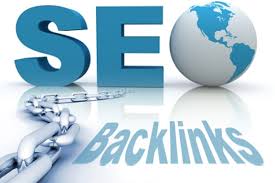Blockchain technology has emerged as one of the most transformative innovations in the 21st century, ushering in a new era of digital trust and transparency. Initially known for its association with cryptocurrencies like Bitcoin, blockchain wallet potential extends far beyond just digital currencies. Its decentralized and immutable nature promises to reshape industries such as finance, healthcare, supply chain, and even governance. In this article, we will explore the fundamentals of blockchain, its applications, and the far-reaching impact it could have on our future.
What is Blockchain?
At its core, blockchain is a decentralized digital ledger that records transactions across multiple computers in such a way that ensures the security, transparency, and integrity of the data. Unlike traditional centralized databases, where a single entity controls the information, blockchain uses a distributed network of nodes (computers) that maintain copies of the entire ledger. Every transaction is verified through a consensus mechanism, which makes it virtually impossible to alter or tamper with the data once it has been recorded.
The term “blockchain” is derived from the way data is stored: transactions are grouped together in blocks, which are then linked (or chained) to one another using cryptographic hashes. This chain of blocks is continuously updated with new transactions, making the ledger both transparent and immutable.
Key Features of Blockchain
- Decentralization: Unlike centralized systems, where a single entity has control over data, blockchain distributes control across all participants in the network. This reduces the risk of data manipulation or single points of failure.
- Immutability: Once data is recorded on the blockchain, it cannot be altered or deleted. This is crucial for applications where data integrity is paramount, such as financial transactions, voting systems, or legal records.
- Transparency: Blockchain’s open nature allows all participants to view the entire transaction history. This transparency fosters trust, as anyone can verify the authenticity of transactions without needing intermediaries.
- Security: Blockchain employs cryptographic techniques to secure transactions. Each block is connected to the previous one using a cryptographic hash, which ensures that once a transaction is added to the blockchain, it cannot be altered without altering every subsequent block, a practically impossible task due to the network’s size.
Blockchain Applications
Blockchain’s versatility has led to its application in various sectors, driving innovation in ways that were previously unimaginable.
- Cryptocurrencies: The most well-known application of blockchain is in the creation of digital currencies like Bitcoin and Ethereum. These cryptocurrencies are powered by blockchain to provide a decentralized and secure alternative to traditional currencies. Bitcoin, for example, allows peer-to-peer transactions without the need for a central authority like a bank.
- Supply Chain Management: Blockchain has the potential to revolutionize supply chains by providing real-time tracking of goods from origin to destination. By recording every step of a product’s journey on the blockchain, companies can ensure transparency and reduce fraud. Consumers can also trace the origins of products, from food to luxury goods, ensuring authenticity and ethical sourcing.
- Healthcare: Blockchain is being explored to manage healthcare data securely. Patient records, when stored on the blockchain, would be accessible to authorized individuals, reducing the chances of data breaches and allowing for seamless sharing of information between doctors, hospitals, and insurance companies. Blockchain can also help track the provenance of pharmaceuticals, ensuring that drugs are not counterfeit.
- Voting Systems: One of the most exciting potential uses of blockchain is in voting. A blockchain-based voting system could ensure that each vote is securely recorded and verifiable, reducing the risk of fraud and voter manipulation. Blockchain could create a more accessible and trustworthy way to conduct elections, leading to greater participation and confidence in the democratic process.
- Smart Contracts: A smart contract is a self-executing contract where the terms are directly written into code. These contracts automatically execute transactions once predefined conditions are met. For example, in real estate, a smart contract could automatically transfer ownership of a property once payment is made. This reduces the need for intermediaries like lawyers and notaries, speeding up processes and cutting costs.
- Digital Identity Management: Blockchain can help manage and verify identities in a secure and decentralized way. This has applications in online services, where users can control access to their personal information. In contrast to centralized systems, which are vulnerable to hacks, blockchain’s distributed nature makes it a more secure way to verify identities.
Challenges and Limitations
While blockchain holds enormous promise, it is not without its challenges:
- Scalability: As the number of transactions grows, blockchain networks can become slow and inefficient. The process of validating transactions and reaching consensus requires significant computational power, which can hinder the scalability of blockchain applications.
- Regulatory Uncertainty: The decentralized nature of blockchain can complicate regulatory oversight. Governments and regulatory bodies are still working to understand how blockchain fits into existing legal frameworks. In some countries, cryptocurrencies and blockchain-based businesses face heavy scrutiny or outright bans.
- Energy Consumption: Blockchain, particularly Bitcoin, relies on energy-intensive mining processes to validate transactions. This has raised concerns about the environmental impact of blockchain networks, especially as the demand for blockchain technology increases.
- Adoption Barriers: Despite its potential, blockchain adoption has been slow, especially in industries that rely heavily on established systems and intermediaries. Transitioning to a blockchain-based system requires significant investment, training, and infrastructure overhaul, which can deter organizations from making the leap.
The Future of Blockchain
The future of blockchain is incredibly promising, with its ability to disrupt numerous industries still in its infancy. As technology evolves, many of the current limitations, such as scalability and energy consumption, may be mitigated by advancements in blockchain protocols and consensus mechanisms.
Moreover, blockchain is likely to become more integrated into the mainstream as businesses and governments explore its applications. The rise of decentralized finance (DeFi) and non-fungible tokens (NFTs) further demonstrates the growing potential of blockchain beyond traditional finance.
In the long term, blockchain could become the backbone of a more transparent, secure, and efficient digital world. With its potential to empower individuals, reduce fraud, and streamline processes, blockchain is poised to revolutionize how we store, share, and interact with data.
Conclusion
Blockchain technology is not just a passing trend—it is a disruptive force with the power to redefine industries and change the way we trust and transact in the digital world. While there are challenges to overcome, its benefits in terms of transparency, security, and decentralization are too significant to ignore. As blockchain continues to evolve and gain adoption, it will likely pave the way for a new era of innovation that extends far beyond cryptocurrency, reshaping how we interact with the world around us.


